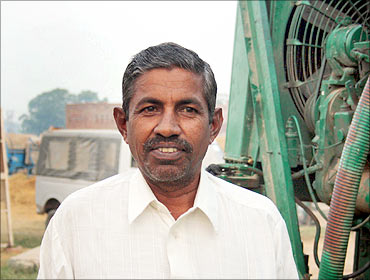
From weeding, watering plants to looking after the cattle, he did everything. He was a hard worker.
He was also very intelligent, observant and curious about everything under the sun. He used to make models of vehicles from mud.
Whenever he saw a device, even if it was something as simple as an iron cutter, he observed how it worked and had many questions about how every device worked.
This curiosity and the urge to build new things increased over the years. As he grew up, he could easily dismantle watches, clocks, radios, and assemble them back.
"It is all about how you think and perceive things. Knowledge comes from observation and a curiosity to learn. How you implement the knowledge depends on how you use your brain," says 48-year-old Rai Singh.
It is this innovative streak that makes him one of India's best innovators.
about Rai Singh's amazing success story...
You can send an e-mail to Rai Singh at rs.01dahiya@gmail.com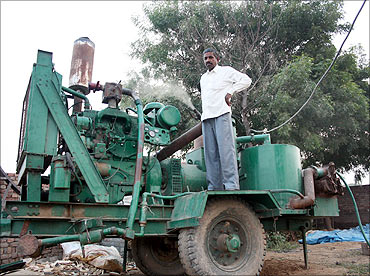
Being in a village, he did not get much of an opportunity to pursue his interests in mechanics. Life was tough, he had no money and he had to spend many nights watering the fields as water supply used to erratic.
His interest in science and technology was very high and it was further fuelled by a radio programme on BBC called Gyan Vigyan. "I realised that I had the ability to understand the language of machines. I was very confident that I could repair any machine although I did not even know the names of the parts," says Rai Singh.
Once when a pump stopped working, his brother asked him to repair it. He spent the whole day doing it and at the end of it, he was successful. He was just 17 then. This boosted his confidence.
He also learned to read and write with the help of his brother, who was educated. "I learnt a bit of English and Maths from my brother. My only regret is I cannot talk to many people who do not know Hindi but are eager to know about my product," he says.
. . .
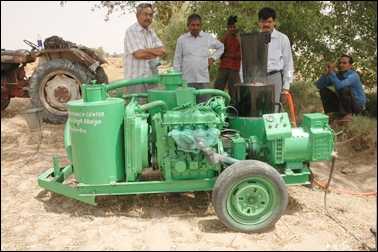
People always turned to him for help whenever any machine stopped working. Since he enjoyed doing the work, he was always willing to help.
"Once, a man in my village asked me to repair his watch. I did it. Five years later he told me that the watch is still working fine! It was a big compliment for him.
Rai Singh continued working in the fields and found time for his experiments too. The origin of his biggest innovation was a kiln for making bricks, which he started in 1982.
He observed that burning of bio-waste in the kiln was producing some gas. He used to watch and try to understand the process behind the burning. "I knew that this burning could be controlled, the temperature could be regulated and the gas could be stored in some way."
...

Later, when tractors started coming to his village, he saw an opportunity to repair them. So in 1991, he opened a workshop to repair automobiles. The workshop did very well. People were happy with his service.
"I could feel machines talking to me so it was easy for me to identify and solve their problems," he says.
Later, he succeeded in converting many diesel engines into LPG as the cost of diesel was rising. This again made him think if the engine can run on LPG, it could run on the gas produced by burning waste in the fields.
"I decided to make an engine that could run using the gas from farm waste, which included anything that could burn, including cow dung. But I did not have any raw material to even make a model. Initially, I made the design with bricks and planned how it can be made out of iron with an old diesel engine," he explains.
. . .

"I am fascinated by machines. I can remember the mechanics of an engine that I would have seen even 20 years ago. But I find it difficult to remember a person whom I have met even 6 months ago. That's the way my brain functions," he says.
"I like Japanese technology the best. Their engines are simple and easy to understand. I also liked the working of Leyland, Cummins and Kirloskar while Tata's engines are complicated, difficult for mechanics as well as users."
The idea about a bio-mass fuel to power engines was always in his mind. After a series of experiments, in 2000 he finally succeeded in building a system, which consisted of a gasifier that could convert biomass into producer gas, which can run the diesel engines. The unit consists of a gasifier, which generates producer gas from bio-waste and uses it to run an engine. The gasifier is conical in shape, compact in design and surrounded by a water jacket with the capability to handle multiple fuel sources.
He did not even know what to call the machine initially. The first version had a huge filtration tube and the waste had to be put inside every 15 minutes. So he worked on making better models. But money was a huge constraint.
"Luckily, I got in touch with the National Innovation Foundation in 2001. My life changed after that. I even learned to talk well after interacting with them. They took me to places and guided me very well. They granted me Rs 15 lakh (Rs 1.5 million) to carry on with my experiments. This helped me modify the gasifier and make it more efficient."
. . .
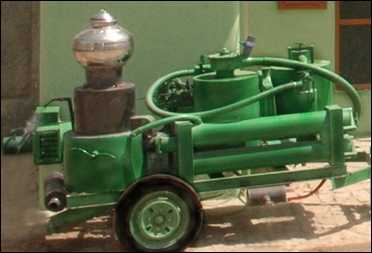
However, it was not been a smooth ride for Rai Singh. A teacher who came to know about this innovation had seen the working of the machine. "He suggested that another person by the name Dr Mallik would like to come to see the gasifier and he would help me. Mallik said he will approach IIT Delhi and help me out. He asked me to explain everything and he recorded the whole thing on camera. Later, the IIT team came here, spent almost a day checking the system."
"I never suspected anything wrong. But I was shocked to learn that this person had claimed the ownership of the machine! The IIT officials too believed him. I came to know of this only when I saw a newspaper report, which said Nabard had granted Rs 10 lakh (Rs 1 million) to Mallik for my gasifier!
. . .
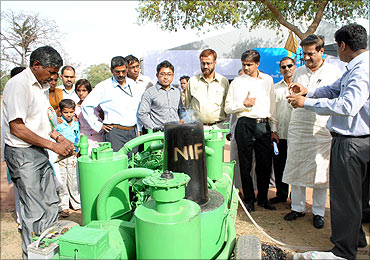
"In fact, he had kept a letter of appreciation ready for the other person who had claimed to have made the gasifier. I met him on August 13, 2004. Two days later, I received that letter of appreciation," says Rai Singh. Mallik even filed a case against Rai Singh.
. . .

The latest version of the Thar bio-mass gasifier unit is made of steel and can produce 1 kilowatt power from 1 kilogram of bio-waste, which can in turn run an engine for an hour.
"So you can light up your house, use the water pumps, run saw mills, flour mills...run just about any machine. So far about 80 gasifiers have been sold in my village and in four other states -- Madhya Pradesh, Haryana, Punjab and Tamil Nadu. One of my machines was sent to Germany as well."
The latest gasifier is priced at Rs 25,000 per kilowatt. The Central government offers a subsidy of Rs 15,000 per kw (depending on the engine capacity). So if a farmer buys an engine capacity of 10 kw, the price of which is Rs 250,000, he will get a subsidy of Rs 100,000.
"The residue gets colleted in a chamber and I have a feeling it could have traces of bio-diesel but it has not been tested yet. The gasfier was used for the first time to run the flour mill in the village and it worked fine. That's when it caught the attention of the villagers."
. . .
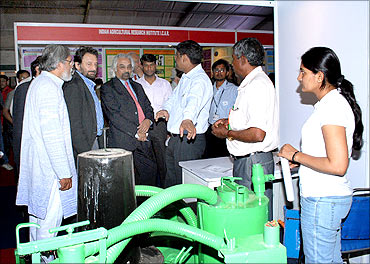
A 10 kw diesel generator would cost Rs 40,000-80,000. While the cost may be lesser, it requires 4 litres of diesel to run an engine for an hour, a bio-gasifer uses 12.5 kg of farm waste. If you use it for 5 hours in a day, you end up spending 20 litres of petrol, while you use only 60 kgs of waste from the backyard.
Considering the price of diesel at Rs 35 a litre, if you use the diesel engine for 365 days for 5 hours, you end up spending Rs 255,500 a year. Using a bio-gasifier can reduce this cost by Rs 198,560. If you use it for 8 hours in a day, then you can save up to Rs 317,696 per year.
"Farmers end up spending a lot on diesel. This device can help them save money, it does not add to the pollution and is easy to use," says Rai Singh.
. . .

"With NIF's help I am starting a factory in Jaipur and, hopefully, I will be able to manufacture sell more products. Some companies did approach me and talked to me about a partnership but I could not agree to their conditions," Rai Singh says.
He never knew what to call the machine. He never knew something called the gasifier exists. Two years after he made the machine, he happened to check out a machine made by TERI in Bara.
He found that the machine he had designed was way ahead of this model in terms of design and output. "The Ministry of Non-Renewable Energy (MNRE) has also offered to help me with funds and manpower. Today I have got more recognition than I had never imagined. It was a great honour to receive the innovation award from President Pratibha Patil. I would also like to meet former President APJ Abdul Kalam one day," says Rai Singh.
. . .

"Money had always been a constraint. I used to live in kuchcha house earlier. During the rains, water used to seep in. Even having a good meal was difficult. Now things have improved a lot. Now I have a good house, which I designed," he says.
He owns a three-storey building with shops on the ground floor. Though, he could not spend much time with his children, he ensured that all the three children got good education.
"My eldest daughter is doing her PhD. The younger daughter completed her MBA and got a job in Bengaluru. My son is doing BBA. They are very supportive and they want market my innovation, make it more popular and available across the country," he says.
. . .
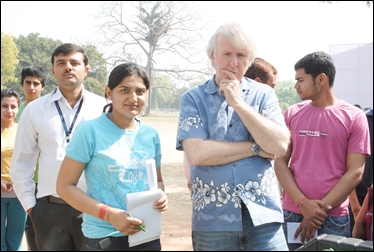
"We have not got a scientific bent of mind. But now I take interest in all his activities and go with him for exhibitions," she says.
Her dream is to help her father to make his innovation available to all. "We do not have good schools or colleges here. It is only because of our father's hard work that we all got good education. Most of the boys drop out of school but my brother is studying well. I also wish to open a college in our village," Rajvala says.
. . .
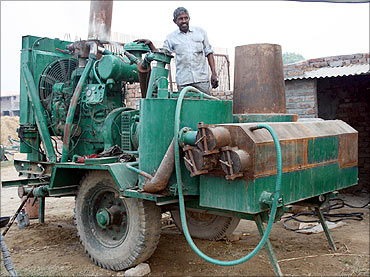
"An interesting instance was when I had a bet with a friend and said you can hear my voice from the radio. I tampered with the radio set, change the circuits and used an old mike and my voice could be heard. My folks said I could land in big trouble because of it."
"I once made a pistol to drive away Neelgai (blue bull) which used to destroy our crops. Unfortunately, once when my brother played with it, his finger got cut. So I stopped doing all that. If I had the time and money, I think I could have done much more. I just cannot stop working," he says.
. . .
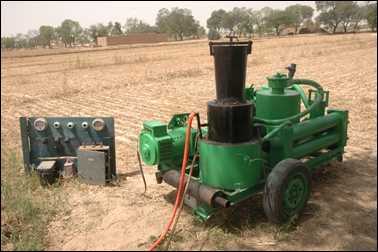
His advice to youngsters is: Always do something new, believe in yourself and do your best.
"I will always be happy to help in whichever way I can," he says.